Ethelbert William Bullinger

“The majority of mankind think that they think; they acquiesce, and suppose that they argue; they flatter themselves that they are holding their own, when they have actually grown up to manhood, with scarcely a conviction that they can call their own. So it was, and so it ever shall be.”
- Ethelbert William Bullinger was born on December 15, 1837 in Canterbury, Kent, England and died on June 6, 1913 in London, England.
- He was a biblical scholar, Anglican priest and ultra-dispensationalist theologian.
- Bullinger was the youngest of the 5 children of William and Mary Bullinger. His family traced their lineage back to Heinrich Bullinger, the Swiss Reformer.
- Bullinger attended King’s College London from 1860 to 1861, and he received an associate degree in theology. He married Emma Dobson, in October 1861 after his graduation. He received a Doctor of Divinity in 1881 from Archibald Campbell Tait, Archbishop of Canterbury, who pointed out Bullinger’s “eminent service in the Church in the department of Biblical criticism”.
- He worked in the Church of England from 1861 to 1888. He began as associate curate in the parish of St. Mary Magdalene, Bermondsey, in 1861, and was anointed as a priest in 1862. He served as parish curate in Tittleshall from 1863 to 1866, in Notting Hill from 1866 to 1869, in Leytonstone from 1869 to1870 and in Walthamstow until he became pastor of the new church of St. Stephen’s where he served from 1874 to 1888.

His Works
Bullinger was editor of a monthly journal Things to Come, subtitled A Journal of Biblical Literature, with Special Reference to Prophetic Truth. The Official Organ of Prophetic Conferences for over 20 years (1894–1915), and he contributed many articles.
- A Critical Lexicon and Concordance to the English and Greek New Testament (1877)
- Numbers in Scripture (1894)
- Figures of Speech Used in the Bible (1898)
- He was Primary editor of The Companion Bible (published in 6 parts, 1909–1922). It was finished by his associates after his death.
To see more information about this topic or other religious topics, you may check the books and magazines available at www.wisdomebooksclub.com or visit our peals of wisdom page page by clicking on this link to access more interesting blog articles, games, quizzes, music videos, religious poems, Jewish recipes, popular sermons, and more.
